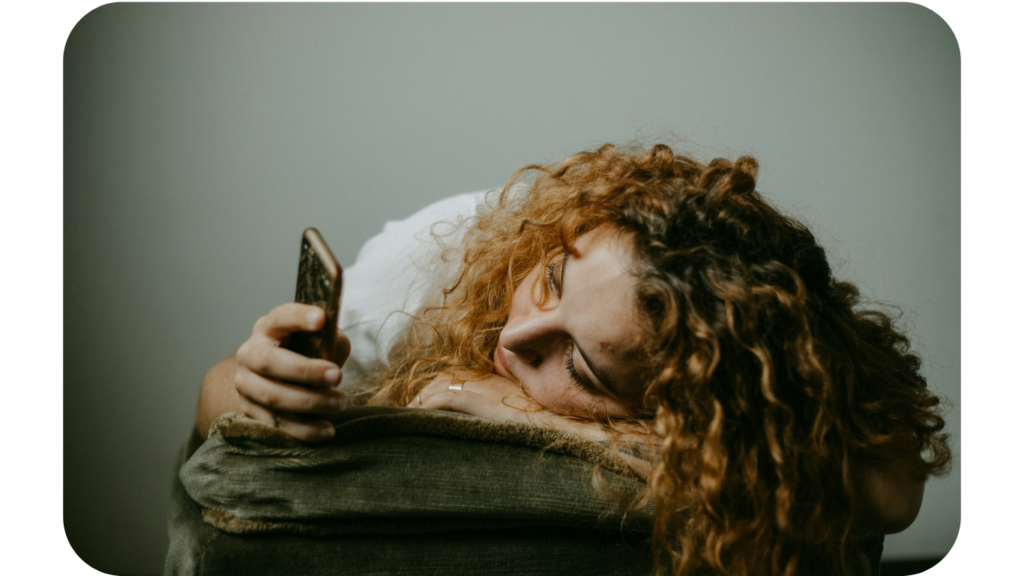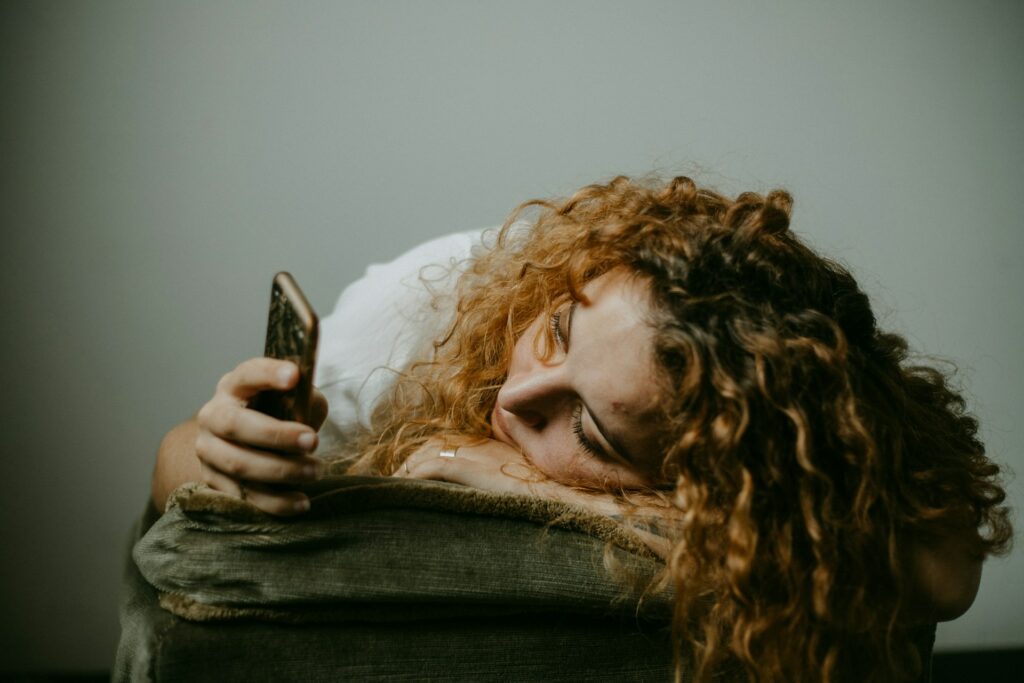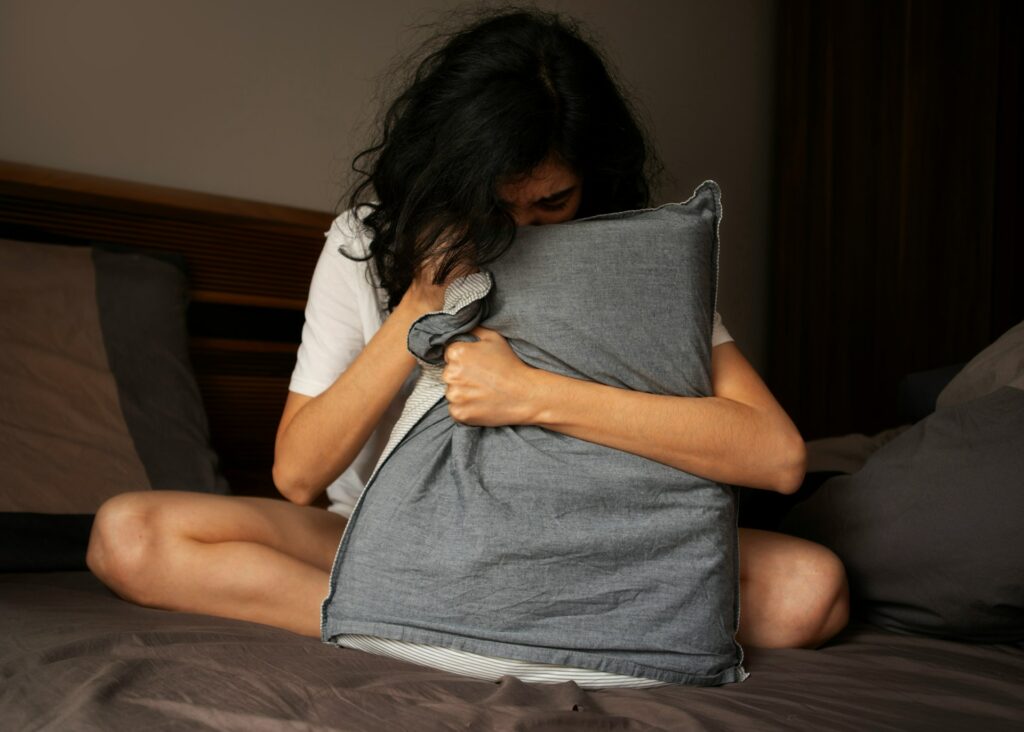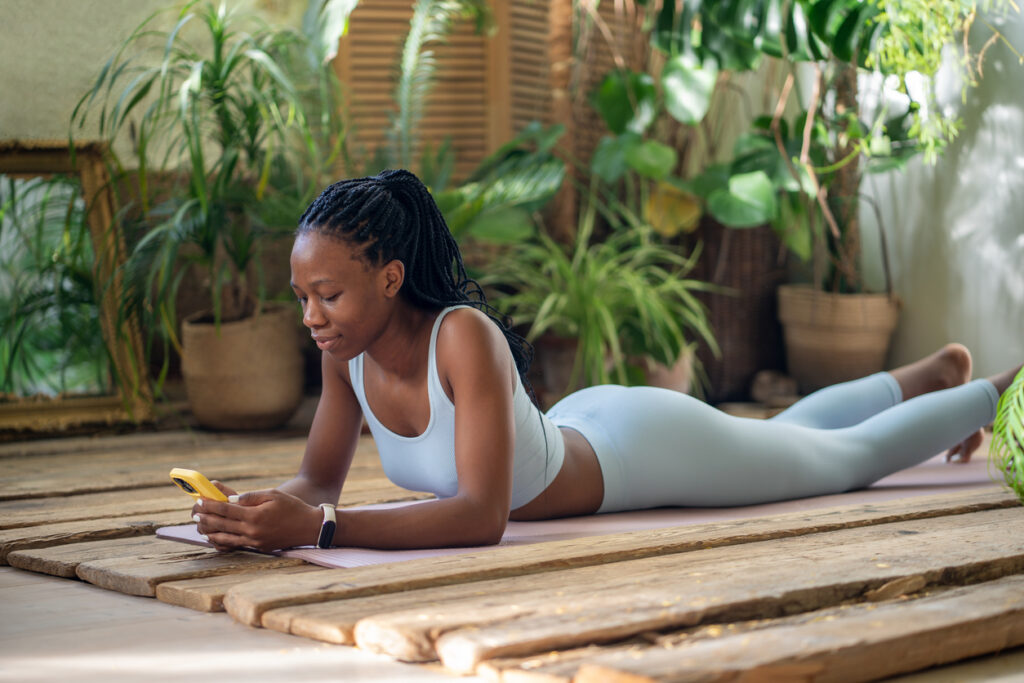The Link Between Social Media and Depression

In today’s world, scrolling through social media is as routine as brushing our teeth. We open apps out of habit — on the train, in bed, while waiting in line. Platforms like Instagram, TikTok, and Facebook keep us connected, informed, and entertained. But more and more people are asking an important question: Is there a link between social media and depression?
The answer isn’t black and white. While these platforms can support connection and creativity, there’s a growing body of research showing that excessive or problematic use of social media can contribute to symptoms of depression, anxiety, and loneliness — especially among teens and young adults. The connection between screen time and mood is nuanced, but it’s worth understanding how our online lives affect our mental health offline.
Understanding the Social Media–Depression Connection
According to the Pew Research Center, 95% of U.S. teens use social media, and roughly one-third say they’re online “almost constantly.” Among adults, nearly 70% are active users — across multiple platforms. In a world where most people are plugged in, researchers have been digging deeper into how social media use affects our emotional health.
Multiple large-scale studies have found that increased time spent on social media is linked to higher rates of depression and anxiety. In one national survey, young adults in the highest quartile of daily social media usage were 1.7 times more likely to report depression symptoms than their peers who used it the least.
In 2023, the U.S. Surgeon General issued a public health advisory warning that adolescents who spend more than 3 hours per day on social media face double the risk of experiencing depression and anxiety symptoms compared to those who use it less.
Correlation vs. causation: It’s important to note that social media doesn’t cause depression for everyone. Some people may use it more when they’re already feeling low or lonely. But for others, the platforms themselves contribute to a downward spiral — a “chicken and egg” effect that researchers are still working to untangle.
What’s clear is that the amount of time spent on social media, and the quality of that time, matters. More time online means less time for things that protect mental health — like sleep, exercise, face-to-face connection, and hobbies. But it’s not just about time — it’s about what we see, how we feel, and how we engage while scrolling.
How Social Media Alters Brain Chemistry
Social media isn’t just a digital bulletin board — it interacts with your brain in real-time. Every time you get a like, share, or comment, your brain releases dopamine, the same “feel-good” neurotransmitter triggered by things like food or physical touch.
These small dopamine hits feel good, and they reinforce the behavior. That’s why checking your notifications can become compulsive. In fact, social media use activates the brain’s reward circuitry in much the same way gambling or sugar does. The unpredictability of rewards (“How many likes will this post get?”) mimics a slot machine, and that uncertainty keeps us hooked.
Dr. Jacqueline Sperling at McLean Hospital explains: “When a behavior randomly sometimes gives a reward, we’re more likely to repeat it. The possibility of a desired outcome keeps users engaged.”
Over time, this constant stimulation can have downsides. If someone relies heavily on social media for self-worth or entertainment, their baseline dopamine sensitivity may decrease, leading to a diminished ability to experience joy from offline life. This is sometimes referred to as a dopamine deficit state — where everyday pleasures feel dull, potentially contributing to low mood and depressive symptoms.
The Comparison Trap: When Everyone Else Looks Happier
One of the most damaging effects of social media is also one of the most overlooked: social comparison. Whether consciously or not, we measure our lives against the curated highlight reels of others. And it doesn’t take long before that becomes toxic.
Think about your feed. Travel photos. Engagement announcements. Before-and-after body transformations. Productivity wins. These aren’t full stories — they’re edited snippets meant to impress. When we compare our messy real lives to these polished posts, it’s easy to feel like we’re falling behind.
- 46% of teens report that social media makes them feel worse about their body image
- Adults aren’t immune either. Studies show that brief exposure to idealized content can reduce self-esteem and increase feelings of inadequacy
This “comparison trap” fuels feelings of envy, loneliness, low self-worth, and dissatisfaction. We forget that what we’re seeing isn’t real life — it’s the best moments, filtered and curated. Even knowing that intellectually doesn’t stop us from feeling like we’re not good enough.
Add to that the emotional weight of FOMO (fear of missing out) — when friends post about parties, vacations, or promotions — and scrolling can quickly shift from entertaining to painful.
Sleep Disruption and Its Emotional Consequences
Many of us scroll in bed, thinking it’s a harmless way to wind down — but it can seriously mess with our sleep. Blue light emitted by screens suppresses melatonin, the hormone that helps regulate sleep-wake cycles. Even more disruptive is the emotional stimulation that comes with seeing exciting, upsetting, or triggering content right before bed.
Surveys show that nearly one in three adolescents use screens — often social media — past midnight on school nights. And only about 38% of teens are getting the recommended 8+ hours of sleep. This isn’t limited to teens; many adults fall into similar patterns.
Why does this matter? Because chronic sleep deprivation is one of the most consistent risk factors for depression. It impairs emotion regulation, increases irritability, weakens cognitive function, and elevates stress hormones — all of which make it harder to cope with negative emotions.
In other words, scrolling late into the night doesn’t just cut into sleep — it fuels a vicious cycle: you feel down, so you scroll for comfort, which reduces your sleep, which makes you feel even worse the next day. This feedback loop is one of the clearest examples of how social media can indirectly worsen symptoms of depression and anxiety.
The Loneliness Paradox: More “Friends,” Less Connection
One of social media’s main promises is connection. You can be in touch with hundreds of people, stay updated on loved ones, and join groups and communities that reflect your interests. But for many people, especially heavy users, social media exacerbates feelings of loneliness.
A study by the University of Pittsburgh found that young adults who spent more than two hours per day on social media were twice as likely to feel socially isolated as those who spent less than 30 minutes a day. Other research has confirmed that the more frequently someone checks social platforms, the more likely they are to report feelings of disconnection.
This is the loneliness paradox: even though you’re surrounded by digital contact, it doesn’t necessarily translate into meaningful emotional support. In fact, passive scrolling — especially when not interacting with content or people — can heighten feelings of being an outsider.
Reasons for this paradox include:
- Superficial interaction: Liking a photo isn’t the same as a deep conversation
- Seeing others connect without you: Feeling left out even though you’re “in the loop”
- Replacing in-person contact: Choosing social media over physical presence or phone calls
- Self-isolation: Avoiding real-life socializing due to anxiety, and using social media to escape it
All of these factors contribute to the growing concern that increased social media use is tied to growing public health issues related to loneliness and isolation. These issues, in turn, are strongly associated with depression, substance use, and even higher mortality risk.
Positive vs. Problematic Social Media Use
It’s important to clarify: not all social media use is harmful. In fact, for many people, these platforms are a lifeline — a place to share experiences, find humor, receive support, and stay informed. But the difference lies in how you use it.
Healthy Use Might Include:
- Checking in briefly to stay in touch with loved ones
- Following inspiring or educational content
- Sharing meaningful personal updates
- Participating in supportive communities
Problematic Use Often Looks Like:
- Spending hours on the apps without realizing it
- Using social media to escape uncomfortable emotions
- Feeling worse (anxious, jealous, sad) after logging off
- Comparing yourself to others and feeling like you don’t measure up
- Ignoring real-world responsibilities or relationships to stay online
A Harvard School of Public Health study found that “routine” social media use was not associated with negative mental health outcomes, but “emotional” use (e.g. checking compulsively or for reassurance) correlated with higher rates of anxiety and depression.
When social media becomes a crutch, a comparison tool, or a space where you seek validation instead of connection, it becomes problematic. Awareness is the first step — the goal isn’t to delete your accounts, but to use them more intentionally.
Recognizing Depression Symptoms Triggered by Social Media
It’s normal to feel a little “off” after seeing something upsetting online. But if these feelings are persistent or worsening, it may be a sign that social media is contributing to symptoms of depression.
Here are some red flags to watch for:
- Feeling persistently sad or hopeless after using social media
- Low self-esteem fueled by constant comparison
- Avoidance of offline activities or relationships
- Loss of interest in hobbies or things you used to enjoy
- Fatigue or disrupted sleep patterns, especially after late-night scrolling
- Irritability, anxiety, or social withdrawal
- Negative self-talk triggered by what you see online
- Basing self-worth on likes, shares, or online engagement
These symptoms overlap with diagnostic criteria for depression and may show up in screening tools like the PHQ-9 (Patient Health Questionnaire) — a widely used mental health assessment. If these signs persist for more than two weeks, it’s worth speaking with a mental health professional.
Healthier Social Media Habits for Better Mental Health
You don’t have to quit social media cold turkey to feel better. Small, intentional changes in how (and how often) you engage can significantly improve your emotional well-being.
Here are research-backed strategies to make your online life more mentally healthy:
Set Boundaries and Limits
Use screen-time tracking tools to cap your daily social media use. Start with a 60-minute limit and observe how it impacts your mood. Apps like Instagram and TikTok have built-in usage reminders.
Avoid Social Media Before Bed
Create a digital wind-down routine: turn off notifications an hour before sleep, and charge your phone outside the bedroom. This helps improve sleep and emotional regulation.
Curate Your Feed
Unfollow or mute accounts that make you feel bad about yourself — whether that’s influencers, friends, or brands. Follow people who inspire, educate, or uplift you.
Create Tech-Free Zones
Designate areas of your home or parts of your day where phones are off-limits — like during meals, while exercising, or first thing in the morning.
Practice Mindful Scrolling
Before opening an app, ask yourself: Why am I logging in? If it’s boredom or stress, try a non-digital coping strategy first — like stretching, journaling, or calling a friend.
Try a Social Media Detox
Take a weekend or even a single day off each week to reset. Use that time to re-engage with offline activities — hobbies, nature, or face-to-face connection.
Replace Screen Time with Connection
Schedule time with friends and loved ones — even short in-person moments help buffer against isolation. If you live far away, a phone or video call offers more emotional depth than likes and comments ever will.
When to Seek Help
If you’re feeling overwhelmed, socially disconnected, or stuck in a cycle of comparison, help is available — and you don’t have to go through it alone.
At the Thriving Center of Psychology, our licensed therapists specialize in:
- Depression and anxiety treatment
- Digital wellness and tech overuse
- Social media-related self-esteem issues
- Teen and young adult therapy
- Online and in-person therapy options across the U.S.
We take a compassionate, evidence-based approach to help clients develop healthier coping strategies, strengthen relationships, and feel more in control of their digital and emotional worlds.
Contact Thriving Center of Psychology Today
If social media is affecting your mood, your relationships, or your overall well-being, it’s okay to ask for help. Small changes in your habits — along with the right support — can make a big difference.
Take just 5 minutes to complete our questionnaire, and we’ll match you with someone who understands your specific challenges.
You deserve to feel good — online and offline.

The Link Between Social Media and Depression
In today’s world, scrolling through social media is as routine as brushing our teeth. We open apps out of habit — on the train, in bed, while waiting in line. Platforms like Instagram, TikTok, and Facebook keep us connected, informed, and entertained.

Signs Depression is Taking a Toll on Your Relationship
Depression can impact every part of a person’s life, from their work to their romantic relationships. Dealing with depression can take its toll on both the person with depression and the supporting partner. If you’re worried that depression is affecting your relationship, understanding its impact is an important first step.

Anxiety Attack and Panic Attack Differences
’s easy to mix up anxiety and panic attacks. While anxiety attacks and panic attacks do have overlapping symptoms, they are different. Let’s get into the differences between anxiety and panic attacks so you can be in a better position to get the help you need.

How to Overcome Procrastination and Anxiety
Procrastination is a very typical human experience. At some point or another, we’re all guilty of putting off that task we know is important. Maybe it’s household chores, filling your taxes, paying bills, or some other mind-numbingly boring task.

